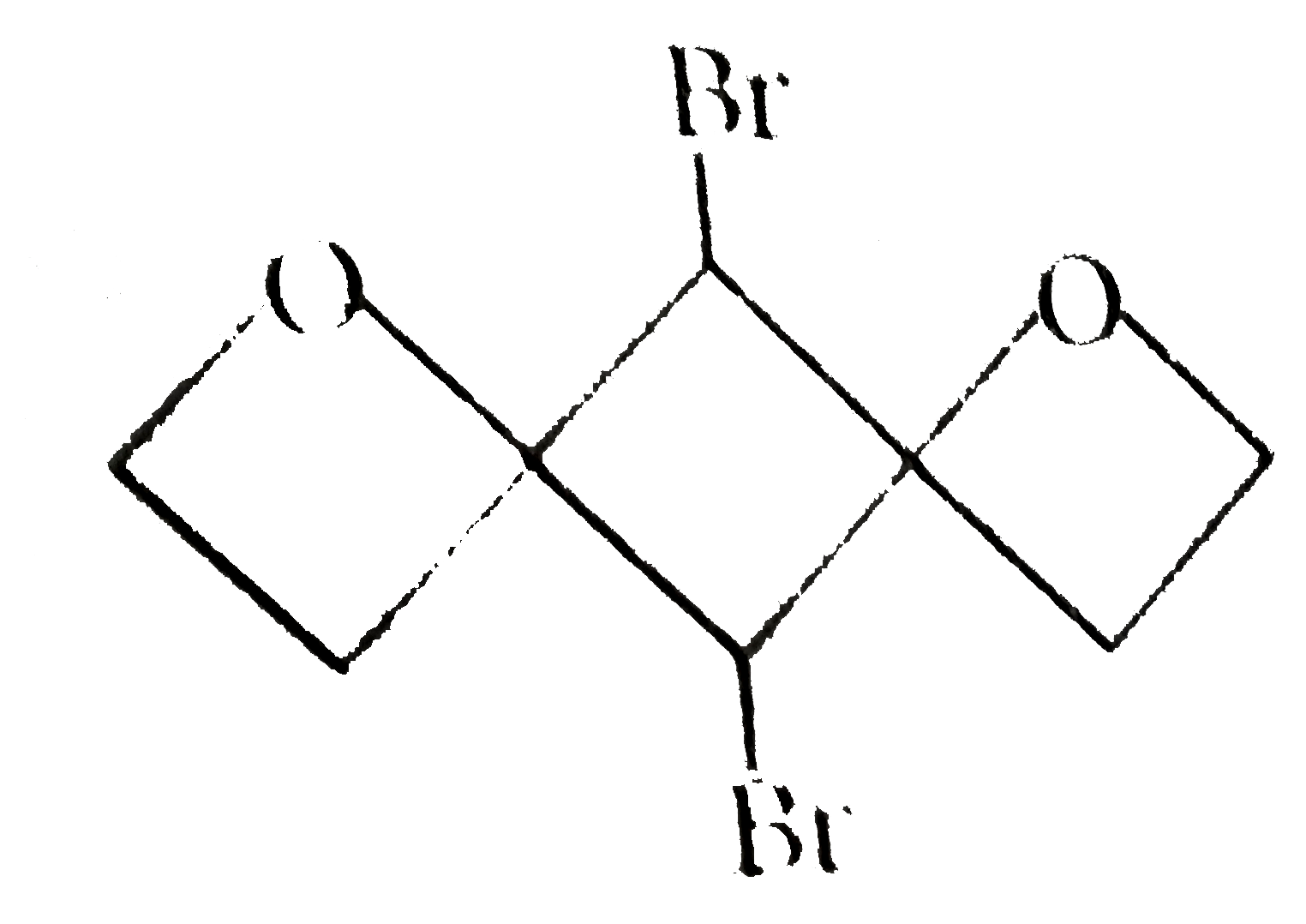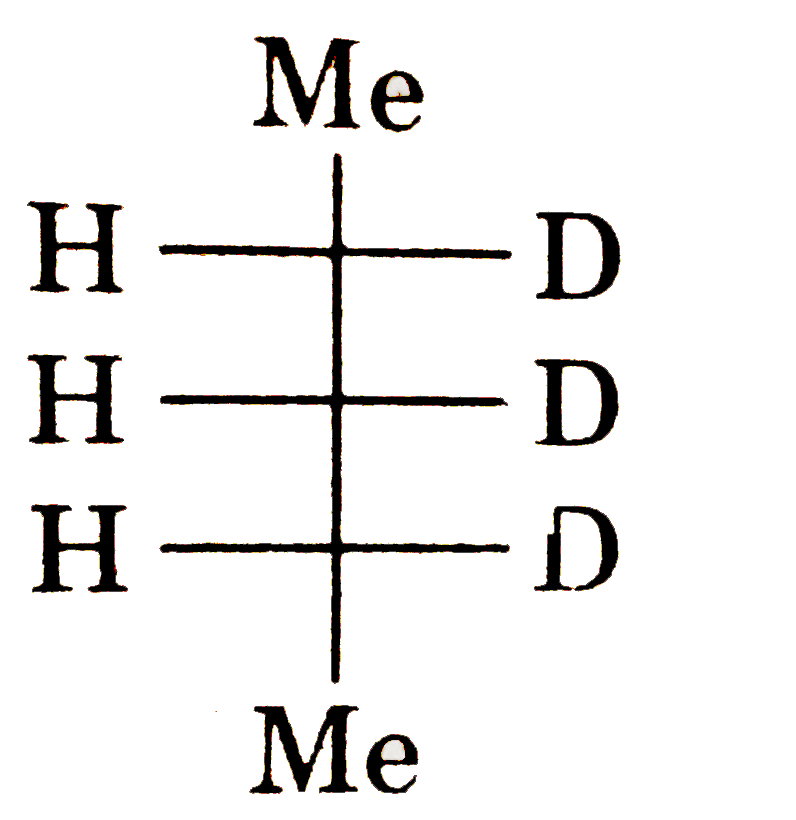The total number of optically active isomers for CH2OH(CHOH)3CHO are
16
8
4
2
The correct Answer is:2
To determine the total number of optically active isomers for the compound CH₂OH(CHOH)₃CHO, we need to follow these steps:
Step 1: Identify the Structure
The compound can be represented as:
- CH₂OH (a hydroxymethyl group)
- (CHOH)₃ (three hydroxymethyl groups attached to a carbon chain)
- CHO (an aldehyde group)
Step 2: Identify Chiral Centers
A chiral center is a carbon atom that is bonded to four different groups. In the given compound, we need to analyze each carbon atom to determine if it is chiral.
1. First Carbon (C1): CH₂OH - This carbon has two hydrogen atoms, so it is not chiral.
2. Second Carbon (C2): CHOH - This carbon is bonded to:
- OH (hydroxyl group)
- H (hydrogen)
- CH₂OH (hydroxymethyl group)
- CHO (aldehyde group)
This carbon is chiral.
3. Third Carbon (C3): CHOH - Similar to C2, this carbon is bonded to:
- OH (hydroxyl group)
- H (hydrogen)
- CH₂OH (hydroxymethyl group)
- Another CHOH (from the next carbon)
This carbon is also chiral.
4. Fourth Carbon (C4): CHO - This carbon is part of the aldehyde group and is bonded to:
- O (from the carbonyl)
- H (hydrogen)
- CHOH (from the previous carbon)
- CH₂OH (from the first carbon)
This carbon is not chiral.
Step 3: Count the Chiral Centers
From the analysis, we find that there are two chiral centers (C2 and C3).
Step 4: Calculate the Number of Optically Active Isomers
The formula to calculate the number of optically active isomers based on the number of chiral centers (n) is given by:
Number of isomers=2n
Where n is the number of chiral centers.
In our case, we have:
n=2
Thus, the number of optically active isomers is:
22=4
Conclusion
The total number of optically active isomers for CH₂OH(CHOH)₃CHO is 4.
---
The compound can be represented as:
- CH₂OH (a hydroxymethyl group)
- (CHOH)₃ (three hydroxymethyl groups attached to a carbon chain)
- CHO (an aldehyde group)
A chiral center is a carbon atom that is bonded to four different groups. In the given compound, we need to analyze each carbon atom to determine if it is chiral.
2. Second Carbon (C2): CHOH - This carbon is bonded to:
- OH (hydroxyl group)
- H (hydrogen)
- CH₂OH (hydroxymethyl group)
- CHO (aldehyde group)
This carbon is chiral.
3. Third Carbon (C3): CHOH - Similar to C2, this carbon is bonded to:
- OH (hydroxyl group)
- H (hydrogen)
- CH₂OH (hydroxymethyl group)
- Another CHOH (from the next carbon)
This carbon is also chiral.
4. Fourth Carbon (C4): CHO - This carbon is part of the aldehyde group and is bonded to:
- O (from the carbonyl)
- H (hydrogen)
- CHOH (from the previous carbon)
- CH₂OH (from the first carbon)
This carbon is not chiral.
From the analysis, we find that there are two chiral centers (C2 and C3).
The formula to calculate the number of optically active isomers based on the number of chiral centers (n) is given by:
Number of isomers=2n
Where n is the number of chiral centers.
n=2
Thus, the number of optically active isomers is:
22=4
The total number of optically active isomers for CH₂OH(CHOH)₃CHO is 4.
Topper's Solved these Questions
- GENERAL ORGANIC CHEMISTRYBOOK - NARAYNACHAPTER - GENERAL ORGANIC CHEMISTRYEXERCISE - Isomerism
6 Videos
- GENERAL ORGANIC CHEMISTRYBOOK - NARAYNACHAPTER - GENERAL ORGANIC CHEMISTRYEXERCISE - Level-II Isomerism
5 Videos
- GENERAL ORGANIC CHEMISTRYBOOK - NARAYNACHAPTER - GENERAL ORGANIC CHEMISTRYEXERCISE - Matrix-Match type questions
7 Videos
- GENERAL ORGANIC CHEMISTRY BOOK - NARAYNACHAPTER - GENERAL ORGANIC CHEMISTRY EXERCISE - LEVEL-II (H.W)
21 Videos
- HYDROCARBONS BOOK - NARAYNACHAPTER - HYDROCARBONS EXERCISE - EXERCISE - 4
18 Videos
Similar Questions
Knowledge Check
 Number of optically active isomer is/are :A0B1C2D3
Number of optically active isomer is/are :A0B1C2D3 Number of optically active isomer is/are :A0B1C2D3
Number of optically active isomer is/are :A0B1C2D3The total number of optically active isomers of [Pt(en)2Cl2]2+ is :
A2B3C4D6
CH2=CHOH and CH3CHO are :
View SolutionThe total number of optically active isomers of [Pt(en)2Cl2]2+ is :
View SolutionThe number of optically active isomers possible for CH3C∣OHH−C∣OHH−C∣OHHCH3 is
View SolutionThe number of optical isomers of CH3CH(OH)CH(OH)CHO is :-
View SolutionThe number of optically active isomer possible for CH3−CH∣OH−CH∣OH−CH∣OH−CH2OH is
View Solution

